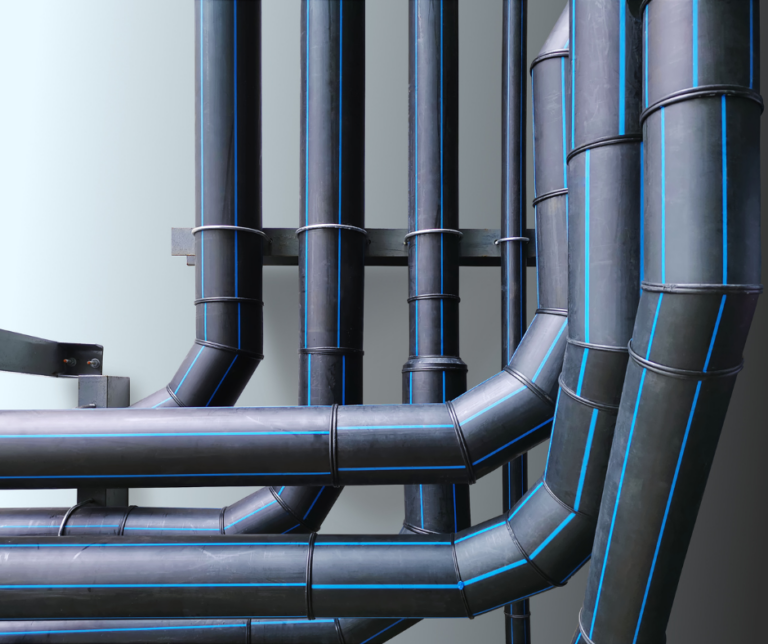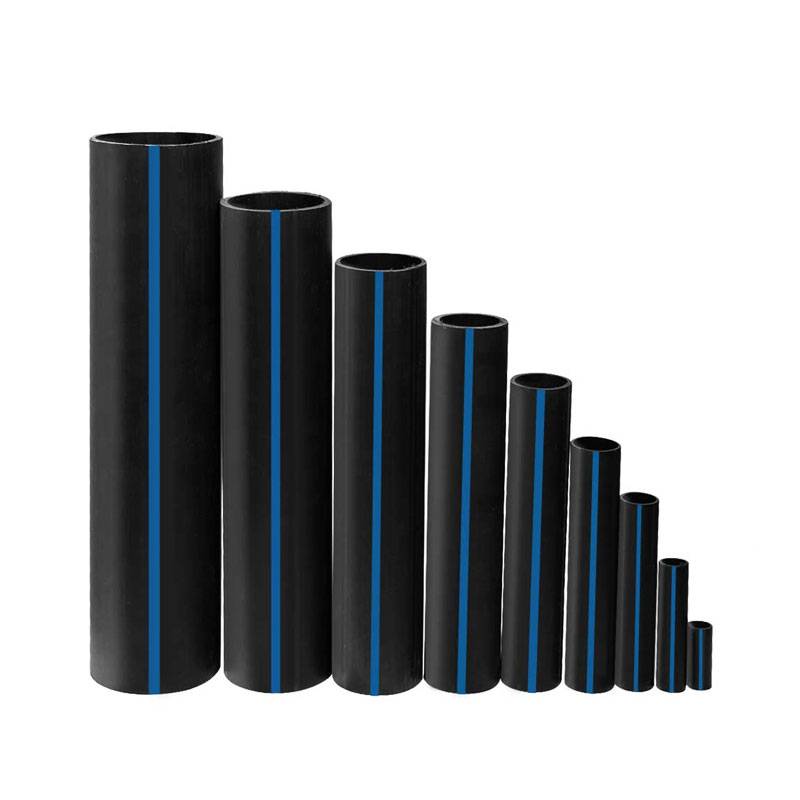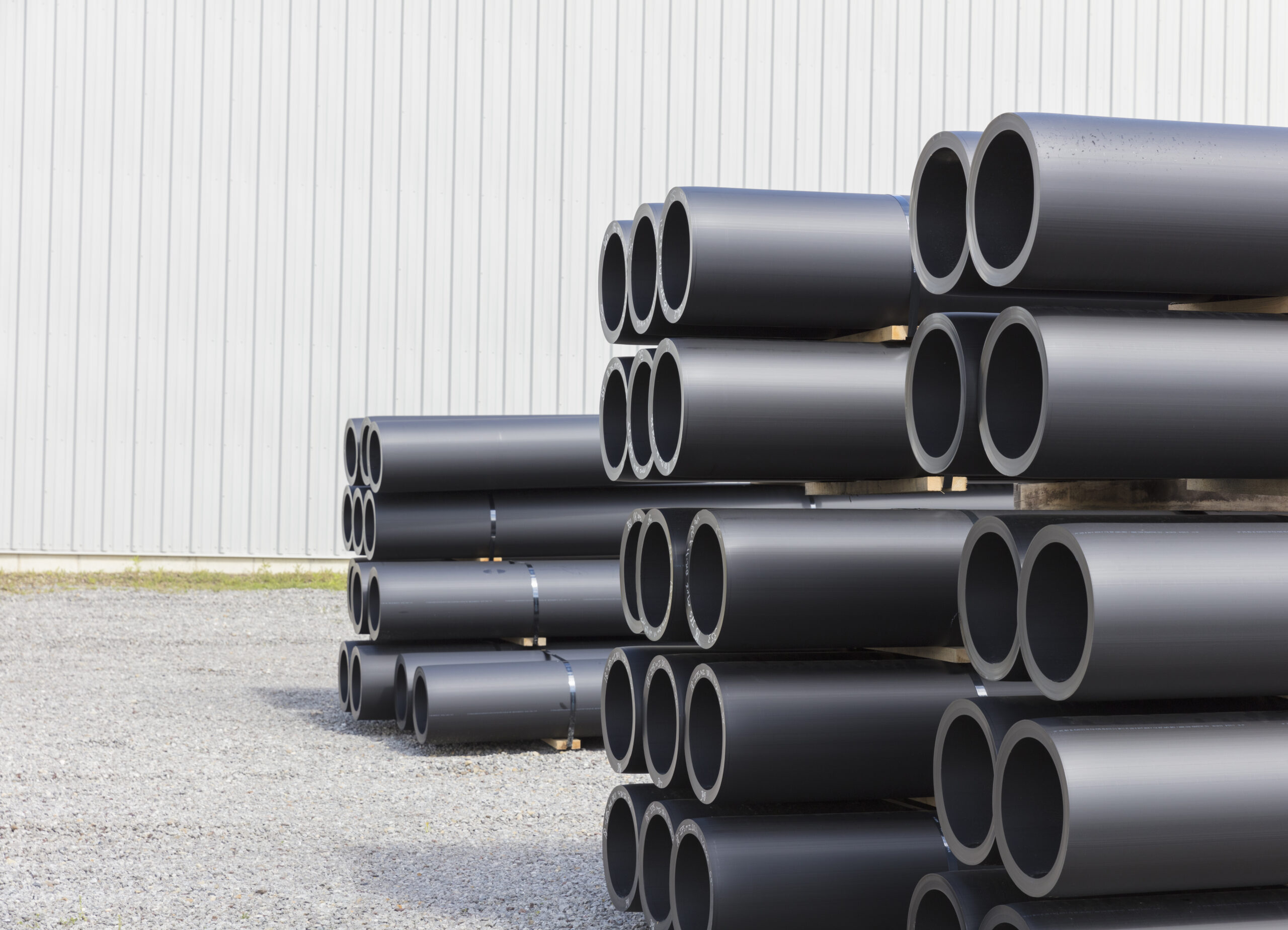The Role of Pipe Manufacturing Midland TX in Building Infrastructure
Wiki Article
Explore the Production Process Behind High-Quality HDPE Pipeline and Its Applications
The manufacturing procedure of premium HDPE pipes is complex and methodical. It starts with the option of resources that enhance efficiency. Following this, ethylene goes through polymerization to create resin, which is then shaped with extrusion. Quality control is extremely important, ensuring that the final product satisfies rigorous criteria. However, the journey of HDPE pipes doesn't end with production. Their applications throughout numerous sectors disclose a broader value worth checking out.Comprehending HDPE: Characteristics and Advantages

High-density polyethylene (HDPE) is a versatile thermoplastic recognized for its sturdiness and resistance to various environmental variables. This material shows excellent tensile toughness, making it ideal for demanding applications. Its low-density framework adds to a light-weight product, promoting simplicity of taking care of and installment. HDPE additionally showcases amazing resistance to chemicals, which lessens degradation when subjected to extreme materials.
The material's reduced moisture absorption further boosts its longevity, making it excellent for use in pipelines and tank. In addition, HDPE is resistant to ultraviolet (UV) radiation, ensuring that products preserve their integrity also when revealed to sunshine. Its adaptability enables for the creation of intricate forms without endangering strength. The green nature of HDPE, typically originated from recycled products, includes in its appeal, advertising lasting practices in manufacturing. In general, these residential properties and advantages make HDPE a recommended option for numerous industrial and customer applications.
Raw Material Option for HDPE Production
The choice of basic materials for HDPE production is necessary to verify the end product meets the desired specs and high quality standards. High-density polyethylene (HDPE) is mostly produced from polymerized ethylene, stemmed from nonrenewable fuel sources such as natural gas or petroleum. The high quality of these feedstocks greatly influences the mechanical and thermal residential or commercial properties of the last HDPE.Ingredients likewise play a significant role in enhancing HDPE's efficiency, consisting of anti-oxidants, UV stabilizers, and colorants, which boost durability and resistance to environmental aspects. The option procedure should think about not only the chemical make-up of the raw materials but likewise their handling qualities to assure effective production.
Additionally, the sourcing of raw products need to focus on sustainability and conformity with ecological guidelines, as responsible practices are imperative in today's market. Eventually, mindful raw material selection lays the structure for creating high-quality HDPE pipelines appropriate for varied applications.
The Extrusion Process: Forming HDPE Pipe
The extrusion process plays an essential duty fit HDPE pipes, beginning with meticulous product prep work strategies that ensure perfect flow and consistency. Just as vital is the layout of the die, which straight influences the last dimensions and surface quality of the pipe. Together, these aspects contribute considerably to the effectiveness and top quality of HDPE pipeline production.Product Preparation Methods
Efficient manufacturing of HDPE pipelines begins with thorough product prep work strategies, especially the extrusion process. Throughout this phase, high-density polyethylene resin is first dried out to get rid of dampness, ensuring excellent circulation qualities. The resin is after that fed right into the extruder, where it undergoes home heating and melting, changing right into a viscous state. This heating procedure is carefully controlled to preserve the product's stability and efficiency. The molten HDPE is compelled with a die, shaping it into a continuous pipeline form. Correct temperature monitoring throughout extrusion is crucial, as it directly affects the product's residential properties and the end product quality. Once shaped, the HDPE pipeline is cooled down and reduced to defined sizes, ready for succeeding processing and applications.Die Layout Relevance
Precision in die design plays a vital role in the extrusion process of HDPE pipes. The die works as the last shaping device, straight influencing the pipe's measurements, wall surface thickness, and surface finish. A properly designed die guarantees uniform website link product flow, minimizing issues such as irregularities and weak areas. The geometry of the die need to be optimized to accommodate the particular buildings of HDPE, including its viscosity and thermal actions during extrusion. In addition, the cooling rate of the product as it travels through the die can markedly affect the pipeline's structural honesty. Consequently, purchasing sophisticated die innovation is important for manufacturers intending to create premium HDPE pipes that satisfy industry criteria and customer assumptions.High Quality Control Actions in HDPE Manufacturing
Although different variables affect the top quality of HDPE pipeline production, efficient top quality control procedures are important to assure consistency and reliability in the end product. Key top quality control methods consist of extensive material assessment, validating that the raw polyethylene satisfies established criteria for purity and density. During the extrusion process, criteria such as temperature, pressure, and cooling time are carefully monitored to keep dimensional accuracy and architectural stabilityOn top of that, post-production screening is vital; manufacturers commonly conduct hydrostatic examinations to analyze the pipeline's strength and resistance to pressure. Aesthetic evaluations for surface issues better enhance top quality guarantee. Qualification from relevant criteria companies, like ASTM or ISO, provides an additional layer of integrity. By applying these comprehensive quality assurance actions, makers can reduce issues, enhance efficiency, and make sure that the HDPE pipelines meet the details demands of numerous applications, ultimately leading to consumer satisfaction and rely on the product.
Applications of HDPE Pipe Across Industries
HDPE pipelines are utilized throughout numerous markets due to their sturdiness and convenience. In water distribution systems, they assure efficient shipment, while in wastewater monitoring, they give reliable options for waste transportation. Additionally, farming watering networks gain from HDPE's resistance to corrosion and flexibility, making it an ideal repipe plumbing option for contemporary farming practices.
Water Distribution Systems
A significant number of sectors rely upon high-density polyethylene (HDPE) pipes for effective water circulation systems. Known for their longevity and resistance to rust, HDPE pipelines are widely made use of in local water supply networks, agricultural watering, and commercial applications. Their light-weight nature promotes very easy handling and installment, decreasing labor expenses and time. Furthermore, HDPE pipes can suit various pressure degrees, making them ideal for both reduced and high-pressure systems. hdpe pipe fittings Midland TX. The flexibility of the product permits for seamless assimilation into existing framework, decreasing the need for comprehensive excavation. Moreover, HDPE's resistance to chemical seeping assurances that the water delivered stays risk-free and tidy, making it an excellent option for preserving the top quality of potable water throughout numerous industriesWastewater Management Solutions
Effective water distribution systems likewise lead the way for cutting-edge wastewater management services, where high-density polyethylene (HDPE) pipelines play a considerable role. Prominent for their toughness and resistance to rust, HDPE pipes are ideal for delivering wastewater in different setups. Their adaptability allows for simple installment in intricate atmospheres, minimizing the demand for extensive excavation. Furthermore, HDPE's smooth indoor surface minimizes friction, enhancing flow rates and efficiency. These pipelines are likewise resistant to chemical leaching, making certain that impurities do not jeopardize the surrounding setting. Industries, towns, and therapy facilities progressively rely upon HDPE pipes for their dependability and long life, making them a favored option for modern wastewater management systems. This flexibility underscores the crucial value of HDPE pipelines throughout countless applications.Agricultural Irrigation Networks
Agricultural watering networks profit considerably from making use of high-density polyethylene (HDPE) pipes, which offer reliable and reliable water shipment to plants. HDPE pipelines are light-weight, making them easy to carry and set up, while their adaptability permits various arrangements in varied terrains. These pipelines show outstanding resistance to corrosion, chemicals, and UV radiation, making certain resilience in rough agricultural settings. In addition, their smooth indoor surface area minimizes friction loss, maximizing water circulation and decreasing energy expenses connected with pumping. The durability of HDPE pipelines, typically surpassing half a century, adds to decrease upkeep and replacement expenditures. Farmers significantly count on HDPE pipelines to boost watering performance and promote sustainable farming methods, inevitably leading to boosted plant yields and resource conservation.
Future Trends in HDPE Pipeline Technology
As the demand for lasting and reliable facilities grows, innovations in HDPE pipe innovation are poised to change different markets. Emerging fads include the assimilation of clever technologies, such as sensors and IoT capacities, which facilitate real-time surveillance of pipe problems, lowering maintenance prices and preventing leakages. Additionally, the development of innovative manufacturing methods, such as 3D printing, is enabling the manufacturing of complex, personalized pipe styles that provide to details job demands.Furthermore, the concentrate on recycling and circular economic situation practices is driving the technology of HDPE pipelines made from recycled products, enhancing sustainability. Improved jointing techniques, such as electro-fusion and mechanical fittings, are additionally enhancing installment performance and dependability. Finally, the expanding emphasis on environmental policies is pressing suppliers to embrace greener production procedures, guaranteeing that HDPE pipelines not only fulfill sector requirements however likewise cultivate a more sustainable future for framework growth.
Often Asked Inquiries
How Does HDPE Compare to Various Other Plastic Materials?
HDPE outmatches several other plastic products pertaining to durability, chemical resistance, view it now and flexibility. Its reduced density and high tensile stamina make it ideal for numerous applications, often going beyond options in both efficiency and longevity.What Are the Ecological Impacts of HDPE Manufacturing?
The ecological influences of HDPE manufacturing consist of greenhouse gas discharges, power consumption, and possible air pollution from making processes. In addition, incorrect disposal can result in soil and water contamination, elevating issues concerning long-term ecological effects.Can HDPE Pipeline Be Recycled?
Yes, HDPE pipelines can be reused. Numerous centers approve made use of HDPE for processing, transforming it into brand-new items. This reusing adds to sustainability efforts, minimizing plastic waste while preserving resources and energy in the production cycle.What Is the Life Expectancy of HDPE Pipeline?

Just How Do Temperature Level Variants Influence HDPE Pipe Performance?
Temperature variants considerably affect HDPE pipe performance, impacting versatility and stamina. High temperatures can result in softening, while low temperatures might trigger brittleness, inevitably affecting the pipeline's sturdiness and viability for numerous applications in varied settings.Report this wiki page